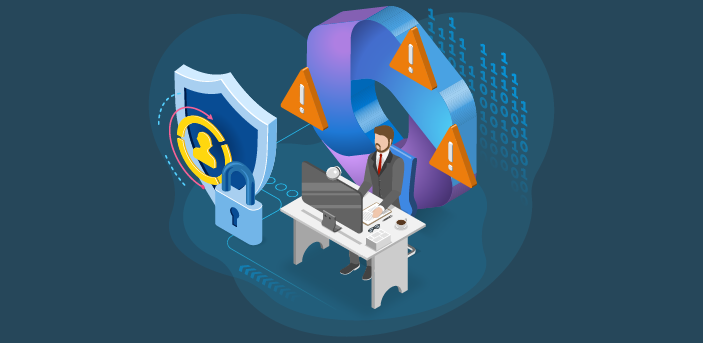It probably doesn’t take elaborate decorations, witches or monsters to scare an IT administrator this Halloween season, considering the security nightmares they navigate to keep their organization’s data safe and secure. The role of an IT administrator is one of constant vigilance in the face of a dynamic threat landscape.
Both in the US and across Europe, October is observed by many as Cyber Security month, with the intention to raise awareness on cyber security matters.
In this article, we look at a few security concerns which are often on the top of an IT administrator’s mind, as they strive to protect their organizations from an ever-evolving landscape of security threats.
Data Breaches
One of the most terrifying scenarios for any IT administrator is the thought of a data breach. Unauthorized access to sensitive data can not only result in financial loss and reputational damage, but it can also lead to legal consequences. Whether that comes down to a malicious hacker, inadequate user offboarding, insider threat, or a simple misconfiguration, data breaches are of constant concern.
System updates
Notifications on security updates – be it a system, app or browser, don't often get the priority they need. There’s always a meeting to attend or a task to complete, which makes it easier for end users to overlook them. However, these updates contain patches for known vulnerabilities and are crucial to keep systems and devices healthy.
Shared accounts
Having multiple users being able to access the same account is not good practice for a number of reasons. Primarily, they limit the IT admin’s ability to monitor or audit who has used the account at any given time, giving partial or full anonymity to the users. Shared accounts increase the potential for account loss, increase vulnerability to hackers and make it difficult to enforce password policies.
Security of remote devices
As remote work becomes a norm for many organizations, this adds more challenges for an IT administrator, with the security of remote devices becoming all the more relevant. Data leaks, breaches and loss/theft of devices are real possibilities that require additional ways of protection than on-premises devices. Remote access security risks need to be well managed to avoid security breaches.
(Lack of) Multi-Factor Authentication
One cannot be too careful, especially when it comes to sensitive company data. MFA provides an extra layer of protection for software and secures resources against unauthorized access. When organizations and teams start using new software and applications, not having MFA enabled poses a security risk for the organization.
Read more about secure collaboration for remote teams here.
Ransomware Attacks
Ransomware attacks can quite literally paralyze an entire organization. What follows is the daunting task of trying to recover data from backups and it cannot be a pleasant experience.
Earlier in 2022, the IT infrastructure of aviation services company Swissport was hit by a ransom attack that led to severe disruptions in their flight operations. Although the attack was contained, cyber gang BlackCat reportedly leaked a sample of data allegedly stolen during the ransomware attack, claiming to have stolen 1.6TB of data.
In yet another example, in 2023, as part of what seemed like a mass cyber-attack, companies including British Airways, the BBC and health care company Boots were hit with an ultimatum to begin ransom negotiations from a cybercrime group after their employees’ personal data was stolen in a hacking attack.
Phishing Attempts and Social Engineering
No matter how strong your technical defenses are, human error remains a significant security risk. Falling victim to phishing emails or social engineering tactics can lead to unauthorized access, data leaks, or malware infections.
According to the State of Cybersecurity 2023 published by Information Systems Audit and Control Association (ISACA), social engineering remains the predominant cyberattack method and grew two percentage points compared to the year before.
What could be scarier than warding off phishing attempts could be when employees fall for a phishing email drill from their own internal IT team and click on a suspicious link. Incidentally, the motto of this year’s European Cybersecurity Month Campaign is #BeSmarterThanAHacker.
Compliance
Staying compliant with data protection and privacy laws and regulations is an on-going topic for IT administrators. The fear of audits, fines, and penalties for failing to meet these standards can be a constant source of stress.
Conclusion
The ‘Cybercrime Trends 2023’ published by SoSafe pegs the rise of artificial intelligence, digital supply chain attacks, ransomware-as-a-service, multi-channel social engineering and multi-factor authentication fails among the top 8 trends in 2023. The report warns that the cyber threat landscape is worsening by the minute.
With the right strategies, a proactive security approach, and regular training, IT admins can better equip themselves to face these challenges and escape from these security nightmares.
Download our latest whitepaper titled 'Understanding Microsoft Cloud Services and Security' to gain valuable insights as well as guidance to mitigate security risks.



